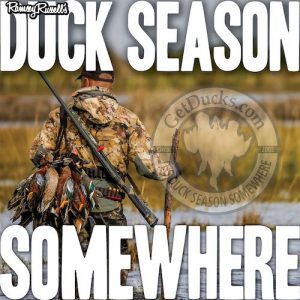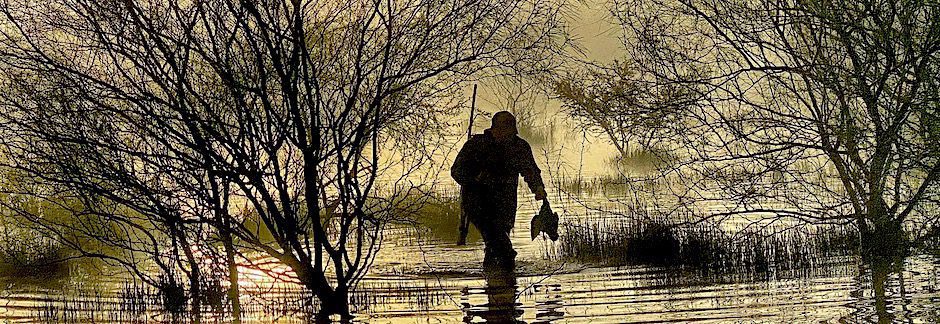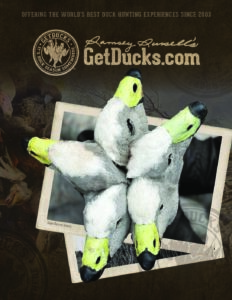MOJO’S Duck Season Somewhere Podcast
EP 221. Brand Father of Outdoor Television, Chris Dorsey

Described as the greatest outdoor TV producer is history, Chris Dorsey is a former wildlife biologist, author of many outdoor books, past Editor-in-Chief for Ducks Unlimited and Sports Afield magazines with works appearing not only in most outdoor magazines but in Newsweek, National Geographic, The Wall Street Journal and Forbes. Having produced more than 2,000 episodes across 55 series, he’s hunted and fished on 5 continents, taking all 29 North American big game species, Africa’s Deadly 7 and all spiral horns. But he’s an ardent duck hunter, too, and one helluva great storyteller. His most recent achievement is the epic IMAX film, Wings Over Water.
Related Links:
EP 220. Hear the Hunt

Huh?! Can you hear me now?! Ramsey meets with audiologist Bill Dickinson, TETRA Hearing co-founder. This episode is purely tell-not-sell and highly informational. While comfortably delivering premium technology, TETRA gives hunters natural hearing experiences while still protecting their hearing. An articulate communicator, Dickinson explains how hearing works, how loud noise impairs hearing and why hunting different critters is not one-size-fits-all as far as our ears are concerned. He explains precisely how TETRA products were developed to optimize your experience based on what you’re hunting while also protecting your hearing. Shotguns, trucks, ammo, decoys, waders and jackets cost lots of money but are all replaceable. As Ramsey has learned the hard way, our hearing is not. Listen closely to this episode, folks, it’s a darned good one!
EP 219. From Oklahoma Game Warden to Director of Conservation

Spend a few day chasing ducks by day and huddling in hole-in-the-wall Mexican food restaurants at night teaches you a lot about the folks with whom you’re sharing the best of times. Today’s guest is no exception. Carlos Gomez recently retired as a game warden Oklahoma Department Wildlife Conservation. How’d Gomez growing up hunting in Oklahoma? How’d he get started into this particular line of work? How’d he work cases, and what were some of the most memorable? What’s his sobering opinion on how today’s hunters may or may not have changed during his career? What’s his new role as Director of Conservation for the best American-made decoy on earth entail? Like shooting green-winged teal that appear out of nowhere on a narrow Oklahoma River stretch, this tailgate episode delivers one shot from the hip after another.
EP 218. Oklahoma Tailgate Talk

James Morel is a born-and-raised in Oklahoma, do-it-yourself waterfowler who especially loves sandhill crane hunting. He’s also Wetlands and Migratory Bird Coordinator for Oklahoma Department of Wildlife Conservation, overseeing waterfowl habitat management, mid-winter waterfowl counts and various other waterfowl management responsibilities throughout Oklahoma. What’s the big deal about sandhill cranes, how are they hunted? Which sandhill crane subspecies are hunted in Oklahoma and what are the differences? Why is Oklahoma a popular destination for both waterfowl and waterfowl hunters, what are the primary species hunted, and what public land hunting opportunities exist? Why is Morel confident that North America waterfowl populations are in good shape, and what biological observations make him think that hunter perceptions might likely be an optical illusion?
EP 217. An Outdoor Addiction with Purpose

Real life isn’t all rainbows and wildflowers. Sloane Brown is the Hunting Marketing Manager for one of the hottest name brands in the entire outdoor world, but that’s what this episode is about. At all. Sloane’s circuitous journey to the top began at the very bottom. Hunting fueled an addiction that ultimately became personal salvation, compelling him to new highs. Proving it ain’t where you start but where you finish, today’s episode is unvarnished testimony that you absolutely do not want to miss.
EP 216. How Tiger King’s Tattoo Artist Began Duck Hunting

“The better you get, the better you get,” says today’s guest, Dirk Sorrels while describing the meandering path that lead to his becoming an integral part of Team Boss Shotshells and then an ardent duck hunter. How’d he end up becoming a tattoo artist, how’d he connect with clients, and what does he most remember about one of his most famous clients? How is duck hunting like surfing? Another must-hear conversation bearing the reminder that when you come to a fork in the road–just take it!
EP 215. Waterfowl of the World, Gary Kramer

From his home base in California, where he formerly worked in Refuges, full-time professional outdoor photographer Gary Kramer set out to film the world’s entire collection of ducks, geese and swans for his recent book achievement. How many waterfowl species exist worldwide, and how many of them did he film for his monumental coffee table book Waterfowl of the World? How many countries did he visit, how long did it take? What were some of his greatest challenges, fondest memories? What were some of the rarest species, wettest and coldest moments? Epic Duck Season Somewhere podcast episode.
Related Links:
EP 214. Mallard Rest, Mississippi

Ramsey visits an exclusive swamp property that is a Mississippi Delta landmark and among a precious handful of crown-jewel properties strung together in Tallahatchie County, only recently trading hands for the first time in a half-century. It was at this particular camp house that a popular bourbon-based, ceremonial duck hunting concoction was formulated. Meeting with host Craig Rozier and long-time caretaker, John T, Ramsey learns something of this property’s colorful history and ongoing waterfowl management activities.
Hunting Hyde County, North Carolina

Located in Hyde County, Lake Mattamuskeet is North Carolina’s largest natural lake. The surrounding area is rich in hunting traditions. Meeting a collection of friends at their “Fetch More” hunting camp, Ramsey learns about hunting ducks, swans, and bears in the area. And more.
North Carolina Tundra Swan Hunting Conversations

Following a successful North Carolina tundra swan hunt during this year’s epic North American Waterfowl Tour, Ramsey visits with host, Tyler Odell and other members of his swan hunting party. Food, camaraderie and fun times shared in the blind while chasing North America’s largest waterfowl.








